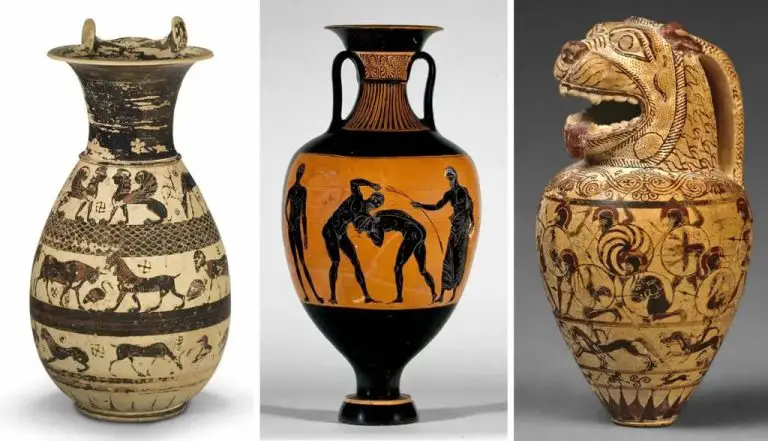What Do I Need To Start Glass Fusing?
Glass fusing is a process where separate pieces of glass are fused together into a single cohesive unit by heating in a special kiln. It involves assembling a design with different colored glass pieces, then heating them to high temperatures so the glass softens and sticks together.
The origins of glass fusing can be traced back thousands of years. According to Wikipedia, “archeological evidence that the Egyptians were familiar with the techniques some 3,500 years ago.” https://en.wikipedia.org/wiki/Glass_fusing The techniques became more refined over centuries with contributions from ancient Romans, medieval European glaziers, and artisans in the Middle East.
The basic steps in glass fusing are cutting and arranging the glass pieces, assembling the design on a kiln shelf, firing in the kiln at specific temperatures based on the project, and finishing with techniques like slumping or polishing. When fired properly, the glass pieces soften and fuse together into one solid, glossy piece with a continuous surface.
Types of Glass
The most common types of glass used in fusing are stained glass, float glass, and fusible glass. Each type has properties that make it suitable for different fusing techniques and desired effects.
Stained glass contains various metal oxides which give it its vibrant colors. The metal content also makes stained glass compatible for firing in a kiln without devitrification. Stained glass can be used on its own or in combination with clear glass for fusing projects. Some popular stained glass brands for fusing include Spectrum Glass and Uroboros Glass.
Float glass refers to the common clear glass sheets used for windows, picture frames, and other purposes. It is made by floating molten glass over a bath of molten tin to create a smooth, flat surface. Float glass is incompatible for firing on its own. However, products such as Bullseye Glass are made from float glass formulated specifically for compatibility with kiln firing. These have a wider working range and perform better in fused glass projects.
Fusible glass is made by glass manufacturers specifically for fusing and slumping applications. The glass is designed to melt smoothly at relatively low temperatures compared to traditional stained glass. Popular fusible glass brands include System 96 Glass and Fusible Glass by Glass Alchemy. The optimized expansion and viscosity of fusible glass results in fewer cracks and breakage.
For more details, refer to this reference on glass compatibility:
https://www.thecrucible.org/guides/glass-fusing-3/
Required Equipment
There are several essential pieces of equipment needed to start fusing glass. The most important is a glass kiln. Kilns designed specifically for fusing glass reach the high temperatures needed to melt glass. Look for a kiln that can reach at least 1500°F. Some popular brands are Skutt, Paragon, and Evenheat. The kiln size you need depends on the size of your projects.
You’ll also need kiln shelves to hold your glass pieces inside the kiln. These are made of a durable material that can withstand high heat. Kiln wash is applied to the shelves to provide a barrier and prevent the glass from sticking. Fiber paper and posts can be used to prop up shelves inside the kiln.
For shaping and slumping projects, you’ll need molds. These are made from stainless steel, ceramic fiber, or kiln-cast glass. The shape of the mold determines the shape of your finished glass piece.
An annealing oven is used after glass comes out of the kiln, to slowly cool the glass to prevent cracks and breaks. A small toaster oven or mini kiln can work for annealing.
A glass cutter and glass grinding equipment are essential for cutting your glass cleanly to size before assembling and fusing. Common tools include handheld cutters, glass pliers, a grinder or belt sander, and grinding heads.
Safety Equipment
When working with glass, proper safety equipment is essential to avoid injury. Some key safety gear includes:
- Gloves – Leather or Kevlar gloves protect hands from cuts when handling glass. Gloves also provide grip when manipulating glass pieces.
- Goggles – Shatterproof goggles shield eyes from flying shards of glass and debris when cutting, grinding, or snapping glass. according to Glass Art Safety Manual.
- Mask – A particulate respirator mask filters out fine glass dust particles and prevents inhalation. Proper ventilation in the workspace is also important.
With the right safety precautions, glass fusing can be an enjoyable hobby. Always wear gloves, goggles, and a mask when handling and manipulating glass.
Glass Cutting and Grinding
Cutting and grinding the glass properly is an essential step in the glass fusing process. Accurate cutting allows for precise piecing together of the glass, while grinding eliminates sharp corners and edges. There are a few techniques and tools to use for cutting and grinding glass for fusing.
For cutting glass, a glass cutter is needed. This is a tool with a small cutting wheel on the end. Light pressure is applied while guiding the cutter along a straight edge or ruler to score the glass. Once scored, gentle pressure can be applied to the score line to break the glass cleanly. It’s important to have a firm surface underneath the glass when cutting. A pair of breaking pliers may also help snap the glass neatly at the score line.1
For grinding, an electric glass grinder with a rotating diamond pad is used. This quickly smooths and shapes the cut edges of the glass to remove any sharp points or corners. Grinding also creates a beveled edge which allows for minimal gaps between pieces. Coolant fluid needs to be applied during grinding to prevent overheating. Gentle pressure and consistent grinding area coverage is key for an even edge.1
With the right cutting and grinding techniques, glass can be shaped as needed for the fusing project design.
Glass Assembly
One of the key steps in creating a fused glass project is properly assembling the individual pieces of glass. According to The Crucible, you’ll want to carefully arrange your cut glass on a kiln shelf in the desired pattern for your project. It’s important to leave a small amount of space, about 1/16 of an inch, between each piece to allow room for the glass to expand when heated.
Everything Stained Glass recommends assembling your glass project on a kiln wash paper or firing paper placed on the kiln shelf to prevent the molten glass from fusing to the shelf. You can use a pair of tweezers or specialized glass pliers to pick up and position each glass piece. Ensure edges of adjacent glass pieces are as close together as possible without touching.
Once your glass project is fully assembled on the kiln shelf, it’s ready to be fired according to the firing schedule for the type of glass you are using. Taking care to properly assemble the glass with even spacing is a key step for success in glass fusing.
Firing Process
One of the most important parts of glass fusing is the firing schedule, which refers to the heating and cooling cycle used in the kiln. Firing schedules vary based on the type of glass, desired effect, and whether a full fuse or tack fuse is needed. During a full fuse, the glass pieces blend together completely so the joint is invisible. A tack fuse leaves a visible joint between pieces.1
A typical firing schedule starts by ramping up to 1480-1500°F at a rate of 300-600°F per hour. This allows the glass to gradually heat up and fuse together. It is held at the peak temperature for 15-60 minutes depending on the project. Then the kiln is cooled slowly around 100°F per hour down to 950°F, before dropping more quickly to room temperature. This process is called annealing and it prevents internal stresses that could cause cracks.2 Having an accurate programmable kiln is essential to follow the proper heating and cooling schedule.
Finishing Techniques
After the fusing process, there are a variety of finishing techniques that can be used to further enhance your fused glass creations. Some popular finishing techniques include:
Slumping – Slumping involves heating the fused glass piece in a mold to create a three dimensional shape. Common slumping molds include bowls, plates, and platters. Proper annealing is critical when slumping to prevent cracks and breakage. See this guide for tips on slumping fused glass.
Adding Dichroic Glass – Dichroic glass contains thin metallic coatings that reflect light in sparkling, rainbow colors. Small pieces of dichroic glass can be placed on top of a fused glass piece before firing to add shimmering accents. Take care when handling dichroic glass, as the coatings can scratch off.
Metal Inclusions – Small copper, silver, or stainless steel pieces can be embedded in the fused glass for artistic effect. The metal will oxidize during firing, adding interest and contrast. Ensure any metal is compatible with glass before fusing.
Coldworking – Grinding, sandblasting, engraving, and polishing can be used to refine the surface after firing. Coldworking provides limitless options for enhancing texture, removing sharp edges, and creating patterns. See this overview of coldworking techniques.
Painting and Gilding – Specialty paints and gilding foils allow adding color accents and gold leaf detailing after firing. Multiple firings may be needed to cure the paints. Use paints specifically formulated for fired glass.
Project Ideas
When first getting started with glass fusing, it’s best to begin with simple beginner projects using basic shapes and few colors. Some ideas include:
- Fused glass coasters – these can be made from scraped glass and are a great way to practice cutting and arranging glass.
- Fused glass pendants – simple pendants with dichroic glass are easy to make using glass scraps.
- Fused glass magnets – make magnets in different shapes and colors for gifts or home decor.
Once you have some experience under your belt, try advancing to more complex projects like:
- Fused glass plates and bowls – carefully plan out the design and arrangement of colored glass.
- Fused glass jewelry – make earrings, bracelets, and necklaces with unique shapes and patterns.
- Fused glass mirrors – incorporate metals and foils for a stunning decorative mirror.
- Fused glass windows – create a stained glass look with glass fusing techniques.
For inspiration on glass fusing projects, refer to sites like Pinterest which showcase the possibilities for both beginner and advanced fused glass artists.
Additional Resources
There are many helpful resources available for beginner glass fusers to continue learning. Here are some of the top books, websites, and communities to check out:
Books:
- The Complete Guide to Fusing by Clausing
- Fused Glass Handbook by McDaniel
- Glass Fusing: Design Techniques With Powders On Fiber Paper by Petra Kaiser
Websites:
- Art Glass Supplies – Offers supplies, tools, and learning resources
- Delphi Glass – Sells fusing supplies and provides guides
- Warm Glass – Fused glass education and tips
Online Communities:
- Facebook groups like Fused Glass Fanatics
- Subreddits like r/stainedglass
- Online forums like Talkglass.com
Connecting with other fusers is a great way to get feedback, inspiration, and troubleshooting help. These resources offer an excellent starting point for beginners looking to improve their skills.




